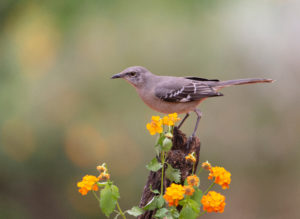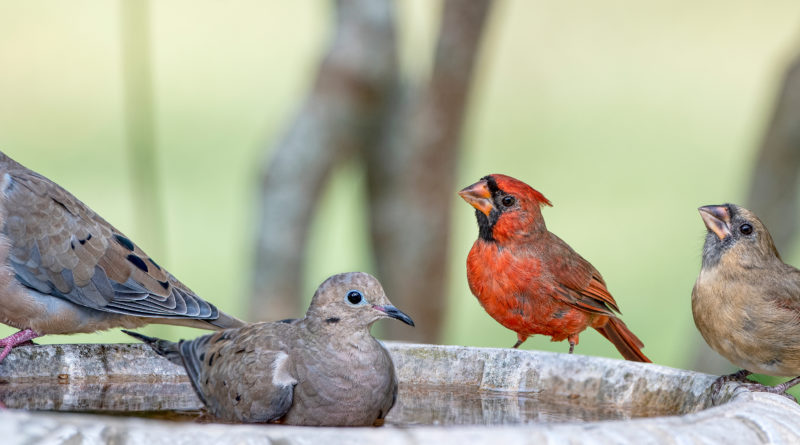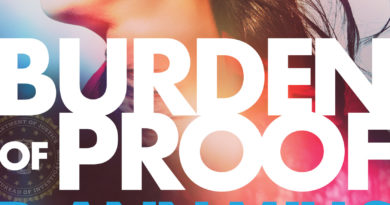Learn to recognize different singers in your garden’s choir
By Amy Rognlie
“I shall wake presently,”
he thought, “at daylight.
It is the season of larks. They will be flinging
the bright seed of song in the furrows of grey light
till the East is gold with the smooth sheaves of singing.”
— Humbert Wolfe
I have often pondered Humbert Wolfe’s lovely, poetic imagery that captures the exquisite beauty of birdsong at sunrise. Waking to the birds “flinging their bright seed of song” in happy abandon is one of life’s small happinesses, though I could never express the sentiment as poetically as Wolfe.
Often in the predawn quiet, still sleep-logged, I overhear my backyard choristers tuning up with a tentative chirp or two before their full-blown recital begins with the sun’s first rays. The common, comical mockingbirds are often the lead singers, of course, but other distinctive voices soon join in.
 Listening closely on any given day, I can pretty easily recognize the chirps and calls of the cardinal, dove, mockingbird and chickadee, but try as I might, I still haven’t identified one particular song. Walking out into the yard at random times, I often hear an unknown bird belting out a little repeated phrase that sounds like “Get ready, get ready, get ready.”
Listening closely on any given day, I can pretty easily recognize the chirps and calls of the cardinal, dove, mockingbird and chickadee, but try as I might, I still haven’t identified one particular song. Walking out into the yard at random times, I often hear an unknown bird belting out a little repeated phrase that sounds like “Get ready, get ready, get ready.”
Apparently, I am not the only one who hears backyard birds speak “words.” In on online search, I found entire lists of birdsong mnemonics. Yep. It’s true, our feathered friends have a language of their own, but sometimes they sound curiously like us.
I learned that the barred owl, who is not even a Texan, has a nice drawl: “Who-cooks-for-you; who-cooks-for-you-all?” And who knew that the blue jay was such a conversationalist?
Reportedly, one could be serenaded by a blue jay singing “Fee-der-de-lurp. Jay-jay-jay. Queedle-queedle-queedle,” while the brown-headed cowbird gleefully whistles “Bubble-bubble-zeeee!”
If your gardening is interrupted by a chirrupy version of “Oh; dear me; three blind mice,” you will know a golden-crowned sparrow is perched somewhere nearby.
But how to discern who is saying what in the midst of all of the queedling, bubbling and fee-der-de-lurping?
The easiest way to begin is to watch a bird and listen to its sound at the same time so you can begin to associate the type of bird with its sound. It is also helpful learn the names of birds so you can look them up online and listen to recordings of the various caws, fee-bees, too-whits and ooo-ooo-oooing, along with the standard chirping, tweeting and singing.
Year-round residents of Central Texas include the northern cardinal, northern mockingbird, blue jay, house finch, sparrow, lesser goldfinch, mourning dove and white-winged dove, the European starling, Carolina chickadee, tufted titmouse and black-crested titmouse, cowbird, and several types of wrens and woodpeckers.
Focus on one type of bird first and learn its name. Smaller birds usually have higher-pitched tones while the songs of larger birds will often have a deeper pitch.
Listen for the rhythm, pace and tone of a song, and see if you can identify one part at a time.
Before you realize it, you will be able to recognize each singer in your yard’s choir, all before you even open your eyes in the morning.
Tips for October & November
Once the intense summer heat has abated, fall and winter is prime time for gardening in Central Texas. Since we still (hopefully) have such a long time before a killing frost, now is a perfect time to plant a second crop of veggies from transplants and even seeds.
To plant in October and early November:
- Trees and Shrubs
- Vegetables: beets (seeds or transplants), broccoli (transplants), cabbage (transplants), carrots (seeds), cauliflower (transplants), chard (seeds or transplants), collards (seeds or transplants), fava beans, garlic, cool-season greens (seeds), kale (seed or transplants), kohlrabi (seeds or transplants), leeks (seeds or transplants), lettuce (seeds or transplants), onion, radish, spinach (seeds or transplants), turnip
- Flowers: alyssum, pansy, calendula, snapdragon, mums.
- Do NOT be tempted to plant flower bulbs (daffodils, tulips, etc.) yet, as it is too early. In our area, flower bulbs should be planted around Thanksgiving or even in early December. Because tulips require weeks of winter cold to bloom and thrive, tulips will usually only bloom the first year they are planted and not come each year as they would in a less temperate climate.




